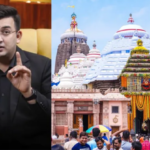Bagha Nacha: Ganjam’s vibrant Tiger Dance keeps Odisha’s cultural spirit alive
By Dr. Sonali Sahu
The Ganjam district of Odisha, known for its rich cultural heritage, is home to one of the most fascinating folk performances in the state—the Tiger Dance, or “Bagha Nacha.” Performed during festive occasions, particularly the Dussehra festival, this traditional dance form is a vibrant expression of the district’s folklore, artistry, and communal celebration.
The Tiger Dance is primarily performed by young men who paint their bodies to resemble a tiger, using bright hues of yellow and black stripes. The detailed body paint, coupled with a tiger mask, creates a striking visual representation of the majestic animal. The dancers imitate the movements of a tiger, leaping and prowling with agility, accompanied by rhythmic drumming, cymbals, and folk tunes. The energy of the dancers and the beat of the drums elevate the atmosphere, drawing crowds to streets where the performances take place.
Historically, the Tiger Dance is believed to have evolved as a form of worship dedicated to the goddess Durga. The dance symbolizes power and bravery, traits associated with the tiger, which is also seen as the mount of the goddess. The performers’ vigorous movements and the accompanying music are thought to invoke the blessings of the deity, while also entertaining the audience.
In recent years, the Tiger Dance has gained prominence beyond Ganjam. Cultural festivals across Odisha and beyond have included performances of this folk art, helping preserve and promote it. However, challenges remain in keeping the tradition alive. The dancers often belong to economically weaker sections, and the intricate body painting process can be both time-consuming and expensive. Despite these obstacles, local communities and cultural enthusiasts have been working towards sustaining this unique tradition by providing support to performers.
The Tiger Dance of Ganjam remains a testament to the district’s vibrant cultural landscape. It is more than just a dance; it is a living, breathing art form that connects people to their roots and continues to inspire awe and admiration among all who witness it.
This dynamic display of tradition not only highlights Odisha’s deep-rooted cultural practices but also serves as a reminder of the need to preserve such folk arts for future generations.






